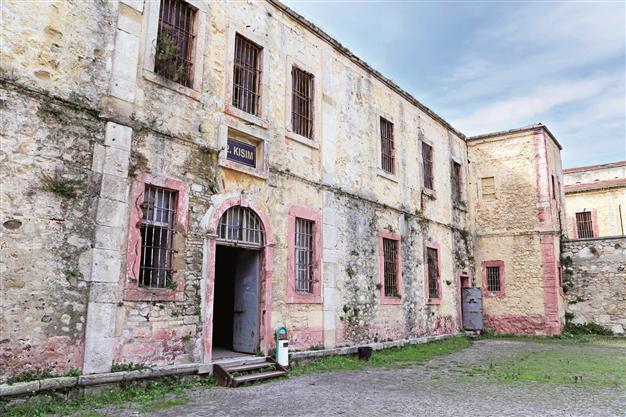EU restoration grant for Turkish writers' jail: Sinop Fortress Prison
ANKARA - Anadolu Agency

The Sinop Fortress Prison is well known as a place where many famous Turkish writers have served sentences. It will now
become an art complex.
The Culture and Tourism Ministry is using a restoration grant from the EU, handed out during the EU membership negotiation process, to transform the Sinop Fortress Prison into an arts and culture complex.
The prison, in the northern province of Sinop, is well known as a place where many famous Turkish writers have served sentences. Described by the famous 17th century Ottoman traveler Evliya Çelebi as a “large and frightening fortress,” the complex will become one of Turkey’s most modern museums as part of the project, according to information provided by the ministry.
As part of the 9.2 million-euros project, an area management plan will be prepared, restorations will be made, and grant programs will also be prepared for similar projects across the whole country. Once the project is completed, the historical prison will be submitted for inclusion in the UNESO World Heritage List.
A historical structure
One of the oldest prisons in Turkey, Sinop Fortress Prison served as a state prison inside the wider Sinop Fortress. It was established in 1887 within the inner section of the centuries-old fortification, located above Cape Sinop on the Black Sea coast.
Due to its position within a fortress, the prison was considered a high-security penitentiary with zero possibility of escape. Living conditions in the prison were very harsh due to the moisture caused by its location close to the sea, which made it difficult to even light a match. Meanwhile, the top of the walls of the inner fortress served as a walkway for patrolling prison guards.
The prison was closed down in 1997 and inmates were transferred to a modern prison newly built in the city. After its closure, the structure was handed over to the Culture Ministry and then opened up to visitors after four years.
With the new EU-funded project, the prison will become a fully equipped art and culture complex including art galleries, museums and accommodation facilities.
The prison has a significant place in Turkish cultural life, as it was featured in various stories and poems by notable Turkish writers who served their sentences there, including Refik Halit Karay, Ahmet Bedevi Kuran, Refii Cevat Ulunay, Sabahattin Ali, Kerim Korcan and Zeyyat Selimoğlu.
One of the most celebrated cultural works on the prison is Ali’s poem “Aldırma Gönül,” written in the prison in 1933 and featuring snapshots of prison life. It was set to music in 1977 by Kerem Güney and later achieved wider popularity in a version performed by Edip Akbayram.
The Turkish movie “Pardon” (2004), the TV mini-series “Firar” (Prison Break) (1993) and “Köpek” (The Dog) (2005) were all shot in the prison.
